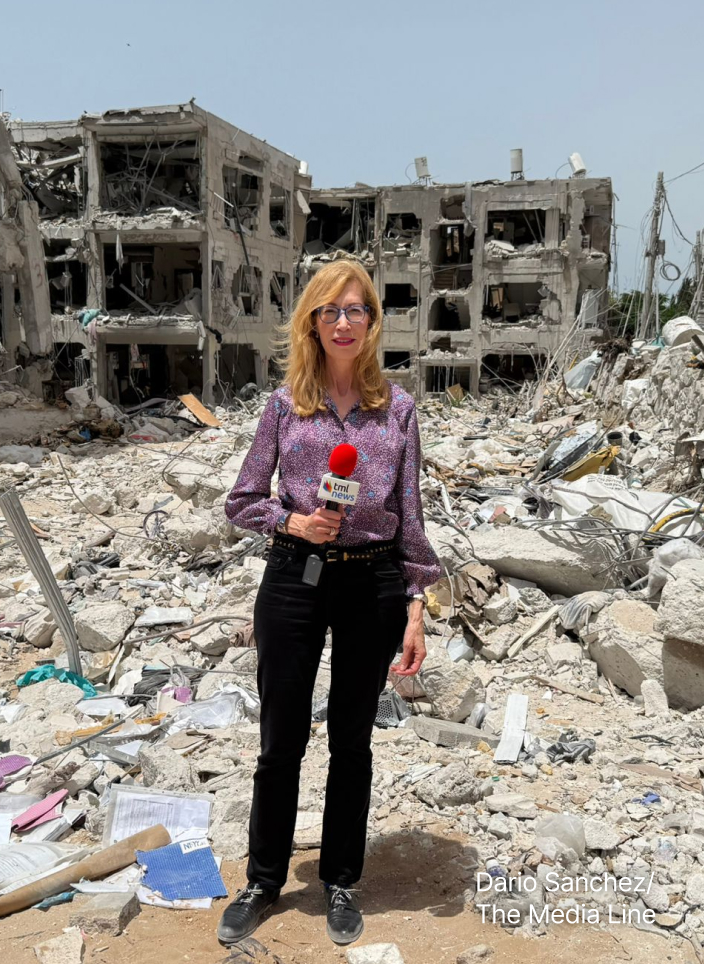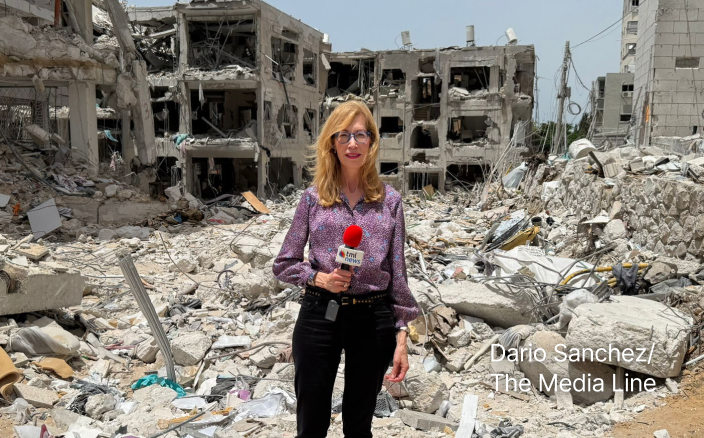After eight months of violence at the Israel-Lebanon border, Israel and Hezbollah are inching closer to an all-out war that threatens to engulf the Middle East in a wider conflict.
On October 8, the day after the Hamas raid that sparked the Israel-Hamas war, Hezbollah began firing rockets and offensive drones at northern Israel. In response, the Israeli military has carried out airstrikes against the group, which is classified as a terrorist organization by Israel, the US, and the Arab League, among other nations.
Hezbollah has acknowledged the death of at least 300 of its operatives since the conflict broke out. A total of 29 Israelis, both civilians and soldiers, have been killed in the fighting.
For many in Israel and Lebanon, the escalating conflict brings to mind the 2006 Israel-Hezbollah War, known in Israel as the Second Lebanon War and in Lebanon as the July War. Over 1,000 Lebanese individuals, mostly civilians, were killed in the conflict, and Lebanese infrastructure was severely damaged. Just over 160 Israelis were also killed, most of them soldiers. Both sides ended that war scarred and deterred.
Throughout the years, Israel has been reluctant to respond forcefully to Hezbollah’s tests of the status quo. Since 2006, residents of Israel’s northern communities have reported increasing visibility of Hezbollah terrorists on the border, in direct violation of UN Resolution 1701, the agreement which ended the 2006 war. Israel did not respond forcefully to these threats, resulting in a gradual erosion of Israel’s deterrence.
Backed and funded by Iran, Hezbollah has spent the years since the 2006 war expanding its abilities. Iran not only supplies Hezbollah with cash for its war against Israel but also with technological know-how and training.
Hezbollah is an army. It does not have the firepower or sophistication of the Israeli military, but it has the ability to cause significant damage and death.
“Hezbollah is an army,” Boaz Shapira, a researcher at the Alma Research and Education Center, a think tank focused on security challenges on Israel’s northern border, told The Media Line. “It does not have the firepower or sophistication of the Israeli military, but it has the ability to cause significant damage and death.”
Israel understands Hezbollah to be its most formidable and immediate enemy, far more deadly and advanced than Hamas in Gaza. It has attempted to make a dent in Hezbollah’s capacity in recent years by carrying out thousands of airstrikes in the region.
Hezbollah has a range of lethal means with which it can challenge Israel, ranging from unsophisticated but deadly mortar shells to highly sophisticated precision-guided missiles. The group is expected to use all the weapons at its disposal if a full-scale war with Israel breaks out. Such a move would bring Israeli defense systems to the brink, with experts estimating that Israel will be subject to thousands of rockets fired toward it during each day of fighting.
According to the Tel Aviv-based Institute for National Security Studies, Hezbollah has about 150,000 missiles and rockets at its disposal. These include simple rockets—pipes armed with explosives that have no precision capabilities—but also precision-guided missiles, ballistic missiles, antitank missiles, cruise missiles, and anti-aircraft missiles.
“The precision missiles have varying methods of guidance—some use laser, some with inertial navigation systems,” Shapira explained. “All have been developed by Iran, both in Iran, Syria, and in Lebanon, in some of the places Israel has already operated against.”
Hezbollah’s rocket and missile arsenal is believed to be capable of reaching all of Israel, although missiles sent from Hezbollah have so far been aimed at Israel’s north.
Give the gift of hope
We practice what we preach:
accurate, fearless journalism. But we can't do it alone.
- On the ground in Gaza, Syria, Israel, Egypt, Pakistan, and more
- Our program trained more than 100 journalists
- Calling out fake news and reporting real facts
- On the ground in Gaza, Syria, Israel, Egypt, Pakistan, and more
- Our program trained more than 100 journalists
- Calling out fake news and reporting real facts
Join us.
Support The Media Line. Save democracy.


In the past eight months, Hezbollah has fired Kornet antitank missiles at northern Israel, which have a range of about six miles. Missiles of this sort require a direct line of sight, using a system that homes in on a laser directed at the desired target.
According to Shapira, Hezbollah studied the Trophy active protection system, Israel’s system meant to protect against antitank missiles. By launching two antitank missiles seconds apart, Hezbollah can overwhelm the Trophy.
Israel’s Iron Dome air defense system is less than ideal for antitank missiles, having been developed with ballistic missiles in mind. The main challenges in defending against antitank missiles are their low flight altitude, which makes them difficult to detect, and their short range, which requires a quick response time.
Hezbollah’s longer-range Almas antitank missile, named for the Farsi for diamond, can reach distances of up to 10 miles. These missiles, developed through reverse engineering of Israeli missiles left on the ground in Lebanon during the 2006 war, are equipped with cameras and do not require a direct line of sight to the desired target.
According to the US-based Missile Defense Advocacy Alliance, Hezbollah’s arsenal also includes Iranian-manufactured cruise missiles. These missiles’ range and low cruising altitude make them difficult to intercept.
The Israeli homefront seems to be unprepared for widespread rocket fire from Hezbollah. Several state comptroller reports have asserted that Israel does not have enough bomb shelters available for its public.
The Israeli government needs to coordinate expectations with the public. Israel’s air defense systems are not an unlimited resource.
“The Israeli government needs to coordinate expectations with the public,” Shapira said. “Israel’s air defense systems are not an unlimited resource, and Israel will be required to decide which sites, such as critical infrastructure and military bases, to protect at the expense of others.”
Hezbollah is also believed to possess anti-aircraft systems which will challenge Israel’s air force. After years of operating in the area, the Israeli military is aware of the threat.
“The nature of war is that one cannot be prepared for everything,” Col. (res.) Dr. Hanan Shai, an expert in military and diplomatic strategy at the Misgav Institute for National Security and Zionist Strategy, told The Media Line. “Solutions are developed on the go, during combat.”
Speaking to reporters on Tuesday, US Air Force Gen. Charles Q. Brown, chairman of the Joint Chiefs of Staff, said the US would have difficulty helping Israel combat heavy barrages of short-range missiles. Israel heavily depends on US interceptor replenishment for its Iron Dome system.
In addition to missiles, drones are also a significant part of Hezbollah’s arsenal. The Alma Center estimates that Hezbollah has about 2,500 such vessels, some of which are used in an active smuggling route that spans many countries throughout the Middle East. Flying low and relatively slow, drones have an exceptional ability to avoid radars, even the most sophisticated ones.
“Hezbollah will prefer to use this method to attack sensitive targets or challenge the Iron Dome, because they are very difficult to identify,” Shapira said. “In recent months, Hezbollah has studied Israel’s systems in order to evaluate them.”
In a recent speech, Hezbollah leader Hassan Nasrallah claimed that his organization has about 100,000 fighters. Many estimates are closer to 50,000.
Israel has targeted middle- and high-level Hezbollah commanders, but the group’s high number of foot soldiers leaves open the possibility of a widespread raid on northern Israel similar to Hamas’ October 7 attack.
Hezbollah forces provided critical training to Bashar Assad’s forces during the Syrian civil war. A central piece of Iran’s Axis of Resistance, Hezbollah is also believed to have trained other Iran-backed militias in Syria, Iraq, and Yemen.
Compared to Hezbollah fighters, Israeli ground troops have seen more recent combat, seeing as many are actively fighting Hamas in the Gaza Strip.
“In recent years, there has been criticism of the unprepared Israeli soldier. The current war proved otherwise in very well-trained and well-equipped soldiers,” Shai said. “However, it is important to remember that Hezbollah will be fighting on its home turf, giving them a huge advantage.”
Adding to the challenge, Shai said, is the very mountainous terrain in southern Lebanon and the likely existence of tunnels and mines in many areas.
As tensions between Hezbollah and Israel escalate, Israeli officials have threatened that a massive strike on Hezbollah may be imminent. US envoy Amos Hochstein has made several attempts to broker a diplomatic solution in order to avoid the eruption of a wider regional conflict involving the US and other world powers.
It is hard to overestimate the value of US assistance to Israel, and an attack on Hezbollah cannot be done without advance coordination with the US
“It is hard to overestimate the value of US assistance to Israel, and an attack on Hezbollah cannot be done without advance coordination with the US,” Shai said. “US support for such an attack will depend on how it assesses Israel’s ability to succeed in such an attack.”